Davao Region Records 64.5 Percent Labor Force Participation Rate in 2024
Of the estimated 3.83 million population 15 years old and over of Davao Region in 2024, 2.47 million were in the labor force. This translates to a labor force participation rate (LFPR) of 64.5 percent. This is 1.9 and 0.3 percentage points higher compared to the LFPR of years 2022 and 2023, respectively. (Table 1a)
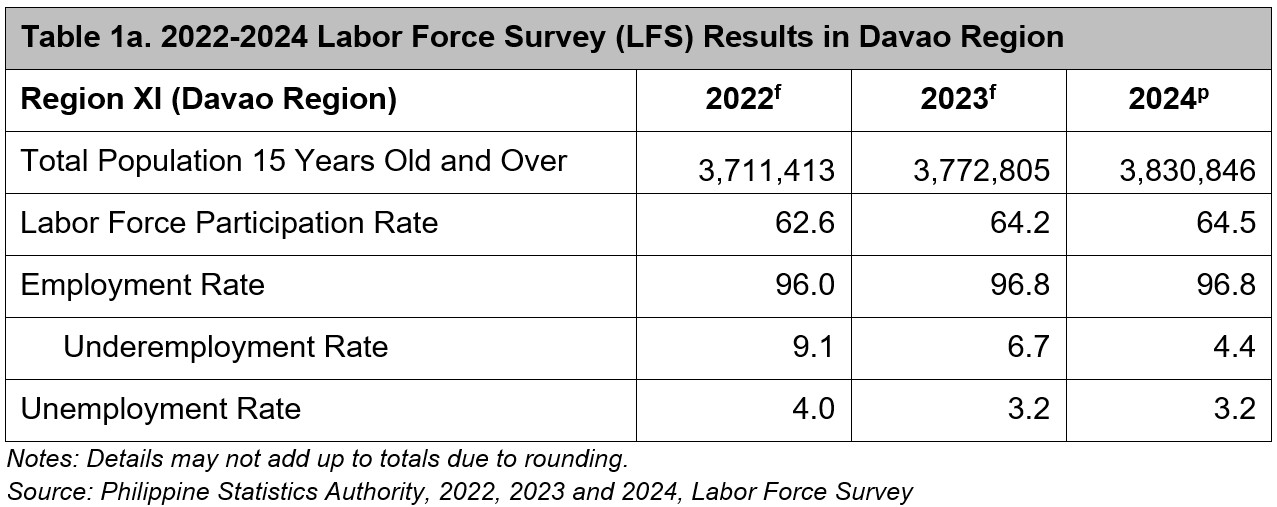
In year 2024, among the provinces and Highly Urbanized City in Davao Region, Davao Occidental reported the highest LFPR at 69.7 percent, followed by Davao del Sur at 69.3 percent. On the other hand, Davao de Oro has the lowest rate at 61.7 percent. Davao del Norte, Davao City and Davao Oriental recorded 64.1 percent, 63.8 percent and 61.9 percent, respectively. (Figure 1)
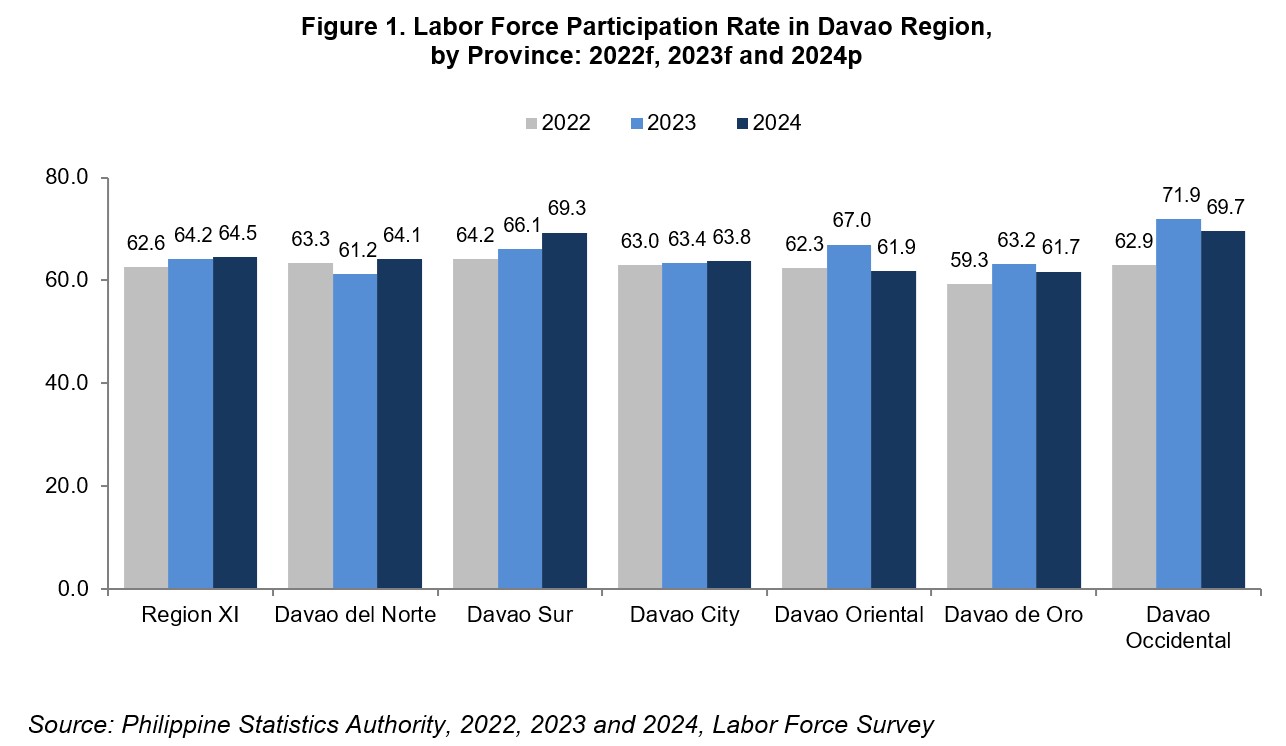
Davao del Sur registers the highest employment rate in 2024
The employment rate in the Davao Region was estimated at 96.8 percent in 2024, translating to approximately 2.39 million persons employed. In 2023, it was estimated 2.35 million individuals were employed (96.8%). In 2022, the employment rate was 96.0 percent. (Table 1a)
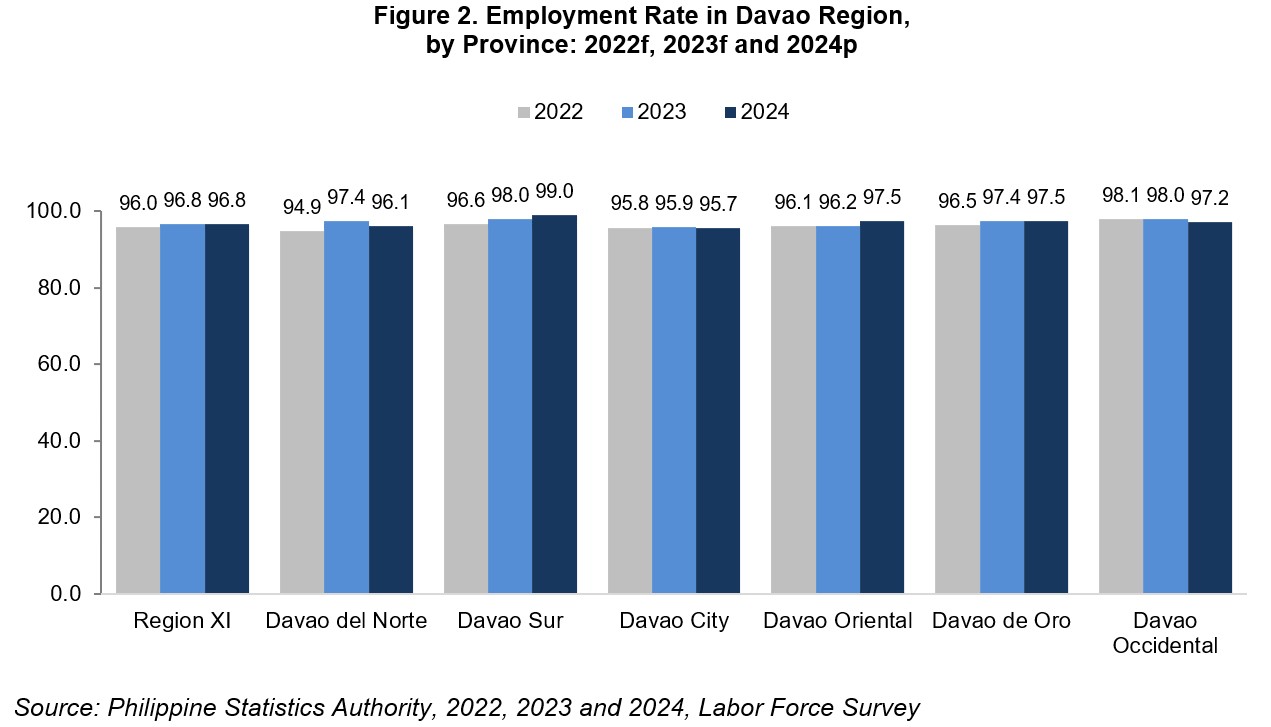
Davao del Sur posted the highest employment rate at 99.0 percent. On the other hand, Davao del Norte and Davao City recorded the lowest rates at 96.1 percent and 95.7 percent, respectively. The provinces of Davao de Oro (97.5%), Davao Oriental (97.5%), and Davao Occidental (97.2%) registered employment rates above the regional estimate of 96.8 percent.
Unemployment rate of Davao Region stands at 3.2 percent
Of the 3.83 million persons 15 years old and over in the labor force, 79 thousand were unemployed, which translates to an unemployment rate of 3.2 percent in 2024.

Davao City registered the highest unemployment rate in 2024 at 4.3 percent, accounting 37 thousand individuals. This was followed by Davao del Norte at 3.9 percent. The provinces of Davao Occidental (2.8%), Davao de Oro (2.5%), Davao Oriental (2.5%), and Davao del Sur (1.0%) recorded unemployment rate lower than the regional figure of 3.2 percent. (Figure 3)
Davao Region’s Underemployment rate hits 4.4 percent
Underemployed persons are employed persons who: expressed their desire to have additional hours of work in their present job or to have additional job, or to have a new job with longer working hours. In 2024, the total number of underemployed persons was estimated at 105 thousand or 4.4 percent of the total number of employed persons in 2024. This marks a significant decrease from the 2023 underemployment rate, which was recorded at 157 thousand or 6.7 percent of the total employed population. (Table 1a)
Davao de Oro recorded the highest underemployment rate in 2024 at 6.2 percent, followed by Davao Occidental (5.7%), Davao Oriental (4.8%), Davao del Norte (4.6%), and Davao del Sur (4.1%). On the other hand, Davao City has the lowest underemployment rate at 3.3 percent. (Figure 4)
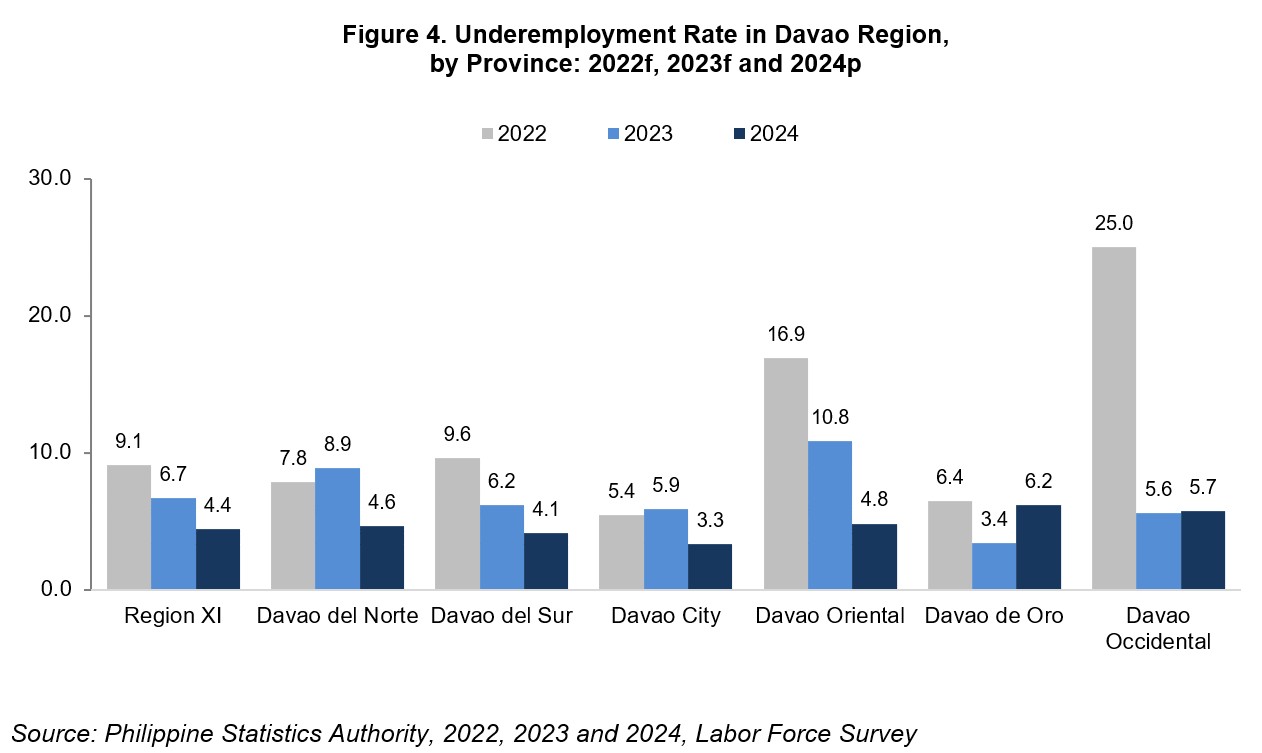
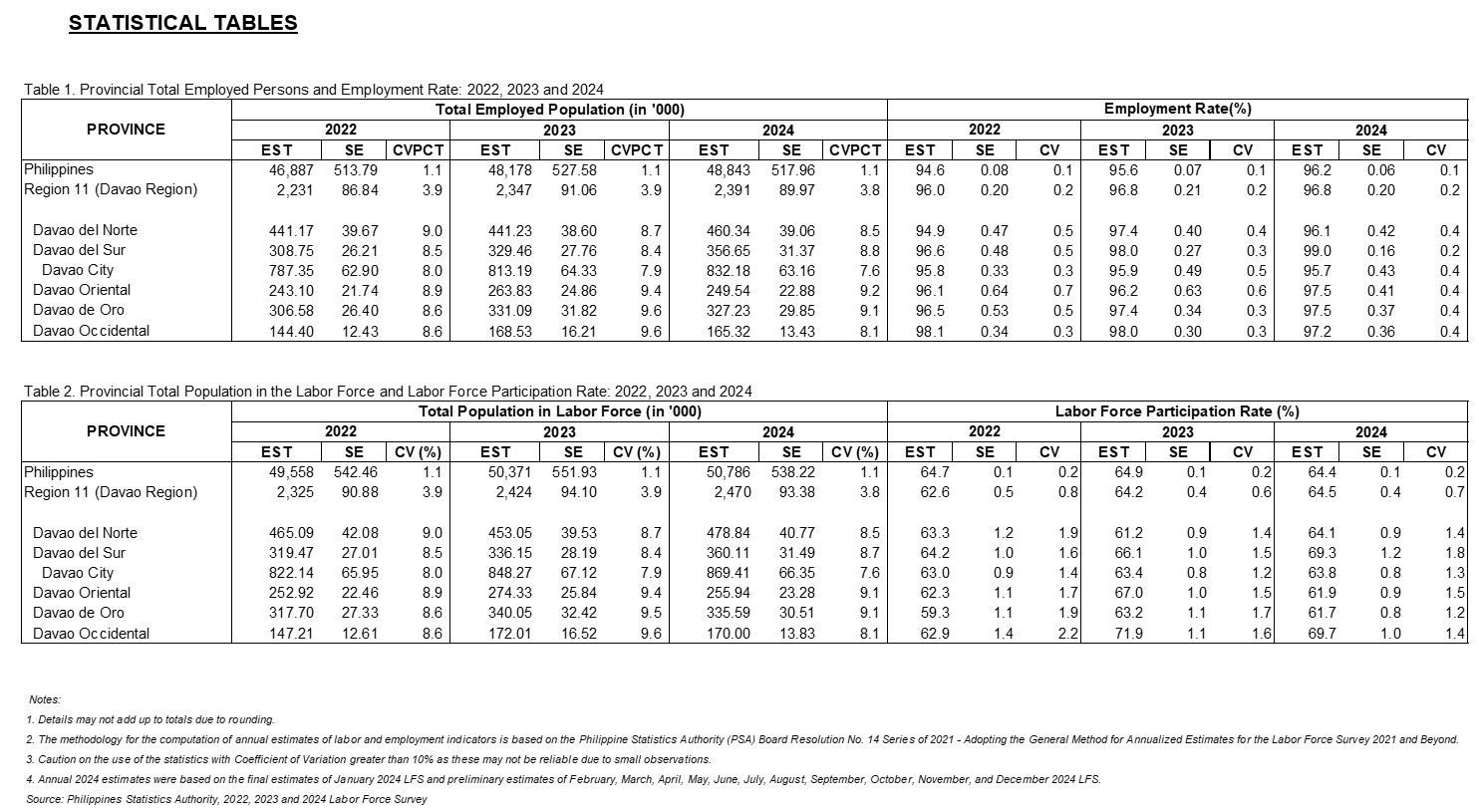

Technical Notes
• The Annual Labor Force Survey (LFS) refers to the average of data collected across all survey rounds throughout the year. It produces labor and employment statistics for the full year, providing a more comprehensive analysis of the Philippine labor market, including the regional, provincial, and highly urbanized city levels.
• The LFS was being conducted on a quarterly basis, specifically in January, April, July and October. Starting 2021, special rounds of LFS, known as monthly LFS were conducted in response to the need for high-frequency data to monitor the impacts of the Coronavirus Disease of 2019 pandemic on the Philippine labor market.
• The reference period for this survey is the “past week” referring to the past seven (7) days preceding the date of visit of the enumerator or the interviewer.
• The 2012 Philippine Standard Occupational Classification (PSOC) was adopted starting April 2016. The 1992 PSOC had been used prior to this round. In January 2019, the 2017 Philippine Standard Classification of Education (PSCED) was adopted. The categories for highest grade completed were also revised considering the K to 12 programs in the education system.
• The population projections based on the 2015 Population Census (POPCEN 2015) has been adopted to generate the labor force statistics. For comparability, population projections based on the POPCEN 2015 were likewise used in the October 2019 labor force statistics.
• In the January 2017 round of the LFS, Computer Aided Personal Interviewing (CAPI) system using a tablet was utilized in the enumeration. Starting April 2020, a hybrid approach was used in data collection, a mixed mode of CAPI face-to-face interview, whenever possible, or a telephone interview.
• Overseas Filipino Workers are not considered part of the labor force in the Philippines. Hence, in the LFS, data on economic characteristics of household members who are overseas workers are not collected. In the LFS report, they are excluded in the estimation of the size of working population, and in the estimation of the labor force.
APPROVED FOR RELEASE :
BABY JEAN P. ALID, CPA, MPA
(Chief Administrative Officer)
Officer-In-Charge
Regional Statistical Services Office XI
